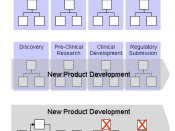Purpose of the ArticleThe purpose of this report is to summarize the article "There's no work force like home" by Mary A. Naylor on Business Week Online. This article shows the advantages of using telework in business. The author also presents the reasons why home-based workforce has strongly developed in many businesses, especially in virtual call centers.
Main findings of the ArticleMany businesses today choose home-based workers to:1.Exploit the underutilized talent pool: Highly skilled workers based in their homes may rejoin the workforce if they can work from home. Thus, hiring managers can choose experts from all over the country.
2.Develop a flexible home-based workforce: Employees, especially women raising children, can work with flexible schedule and part-time hours in their home offices.
3. Reduce expenses: Business can reduce facilities expenses. They will also pay little or no costs in hiring new agents. Employees save on commuting and dry cleaning expenses.
They also do not have to live near urban centers.
4.Increase work loyalty: Because home-based employees appreciate the working flexibility, they often respond with increased productivity and dedication.
Home-based work develops in customer care because of:1.Advance technology: Technology provides audio and video monitoring to the virtual call centers. Instant messaging and chat forums connect the disperse employees together by sense of belonging.
2.Streamlined business processes: With technology improvement, business processes are not as complicated as in the past. Therefore, people can now work at home efficiently.
3.New generation of corporate managers: These managers use virtual servicing as an efficient strategy.
Conclusion on the ArticleThe author of the article points out the importance of telework in (1) shifting the economy toward a home-based workforce, (2) balancing work and life for employees, and (3) allowing more jobs to remain in the U.S. I...


